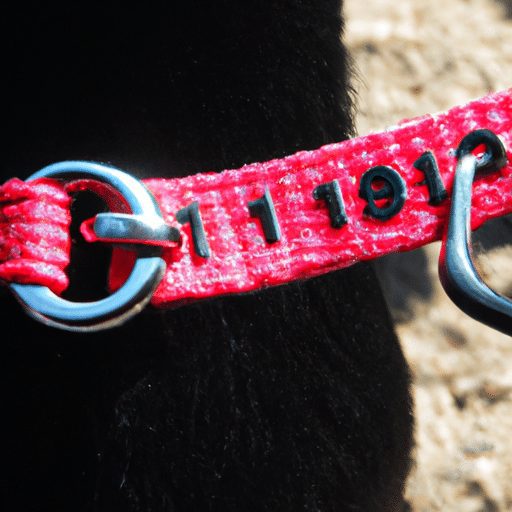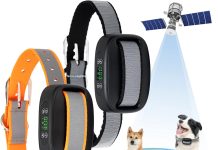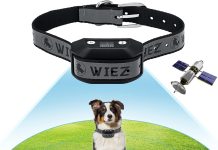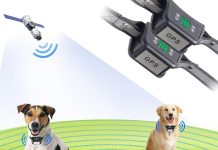In our quest to ensure the safety and well-being of our beloved canines, we find ourselves constantly exploring various training methods and tools. Among these tools, the dog training collar has earned its place as a popular choice. However, in a sea of options, the question arises – what is the safest dog training collar? With an array of factors to consider, from effectiveness to comfort, it is essential to delve into the world of dog training collars to uncover the options that prioritize the safety of our furry companions.
Overview
When it comes to training our furry companions, using the right tools is crucial. Dog training collars can be a valuable aid in teaching our dogs proper behavior and obedience. However, with so many options available, it’s important to consider the safety and effectiveness of each type.
In this comprehensive article, we will explore the various types of dog training collars, safety considerations when using them, expert recommendations, different training techniques, potential risks and concerns, and how to choose the safest collar for your dog. We will also discuss the gradual training process, the importance of supervision and monitoring, and conclude with key takeaways for responsible dog owners.
Types of Dog Training Collars
Table of Contents
1. Martingale Collar
The Martingale collar is a popular choice for training dogs, especially those prone to pulling on the leash. It is designed with a limited-slip feature that makes it tightens when the dog pulls, preventing them from slipping out of the collar. This collar provides a gentle correction without causing discomfort or pain to the dog, making it a safe and effective tool for training.
2. Head Collar
A head collar, also known as a halter, is often compared to a horse’s halter as it fits over the dog’s head and muzzle. This type of collar gives the handler more control over the dog’s head, allowing for gentle redirection and discouraging pulling. While it may look similar to a muzzle, the head collar does not restrict the dog’s ability to open its mouth or breathe comfortably.
3. Prong Collar
The prong collar, also called a pinch collar, is a contentious choice in the training community. It consists of metal links with blunted prongs that pinch the dog’s skin when tension is applied. Proponents argue that it mimics a mother dog’s correction, while critics worry about the potential for injury and discomfort. It is crucial to use the prong collar properly and with caution, under expert guidance, to prevent harm to the dog.
4. Choke Chain Collar
Similar to the prong collar, the choke chain collar is controversial due to its potential to cause harm if used incorrectly. It consists of a metal chain that tightens when the leash is pulled, applying pressure to the dog’s neck. It is important to note that this collar should never be left on an unattended dog or used for long periods. Proper use, combined with positive reinforcement techniques, is vital to ensure safety and prevent injury.
5. Remote Training Collar
A remote training collar, also known as an e-collar or shock collar, is a controversial tool that uses electronic stimulation to reinforce commands. Many modern remote training collars offer adjustable levels of intensity, allowing dog owners to find the right level for their pet. When used responsibly, remote training collars can be effective tools, but proper training and sensitivity are crucial to avoid causing unnecessary stress or pain.
6. Vibrating Collar
The vibrating collar, also referred to as a pager collar, emits a mild vibration as a form of stimulation to get the dog’s attention or reinforce a command. Unlike the shock collar, the vibrating collar does not produce a painful sensation and is considered a milder alternative. It can be an effective tool for dogs sensitive to electronic stimulation or those who require a more subtle form of correction.
7. Citronella Collar
The citronella collar is designed to deter unwanted behavior through scent rather than physical sensation. When the dog engages in undesirable behavior, the collar releases a burst of citronella mist, which most dogs find unpleasant. This collar can be a useful tool for dogs who are particularly averse to electronic or physical stimulation.
Safety Considerations for Dog Training Collars
When it comes to choosing and using a dog training collar, safety should always be the top priority. Here are some important safety considerations to keep in mind:
1. Comfort and Fit
A properly fitting collar is essential for the dog’s comfort and safety. The collar should be snug enough to prevent slipping out, but not so tight that it causes discomfort or restricts breathing. It is important to regularly check and adjust the collar as the dog grows or changes weight.
2. Material and Construction
Ensure that the collar is made of high-quality, durable materials that can withstand the rigors of training. Avoid collars with sharp edges, loose parts, or materials that may irritate the dog’s skin. Collars made of nylon or leather are often recommended for their durability and comfort.
3. Adjustable Settings
Collars with adjustable settings are beneficial as they allow you to tailor the intensity of the correction or stimulation to your dog’s individual needs. This ensures that the collar is not too harsh or overwhelming for your canine companion.
4. Proper Training and Usage
Using a training collar without proper training and guidance can lead to ineffective or harmful results. It is crucial to understand how to use the collar correctly and to follow recommended training techniques. Seek professional guidance or enroll in obedience classes to ensure you are using the collar safely and effectively.
5. Professional Guidance
Consulting a professional dog trainer or veterinarian before selecting and using a training collar can provide invaluable guidance. They can assess your dog’s specific needs, suggest the most suitable collar type, and guide you on proper usage and techniques. Professional input ensures the safety and success of your dog’s training journey.
Expert Recommendations for Safe Dog Training Collars
With so many options available, it can be helpful to consider expert recommendations when choosing a training collar for your dog. Here are some widely recommended options:
1. Positive Reinforcement Methods
Experts universally agree that positive reinforcement should be the foundation of any training program. Reward-based methods, using treats, praise, and play, are effective in teaching dogs desired behaviors, without the need for aversive tools. Positive reinforcement creates a bond of trust and enhances the training experience for both the owner and the dog.
2. Martingale Collar
The Martingale collar often receives recommendations from trainers due to its gentle correction and effectiveness in preventing pulling. Its limited-slip design and adjustable fit make it a safe and comfortable option for many dogs, especially those with neck or trachea sensitivity.
3. Head Collar
Experts often recommend head collars as an effective tool for training dogs with pulling issues. The head collar allows for gentle control and redirection without applying pressure to the dog’s neck. It can be particularly useful for larger or strong-willed dogs that require extra guidance during walks.
4. Remote Training Collar with Vibration
When used properly, remote training collars with vibration features can be a safe option for training. The vibrating stimulation offers a milder alternative to electric shock and can be effective for dogs with sensitivities. However, it is crucial to use the vibration feature responsibly and never at the highest intensity levels.
5. Citronella Collar
For owners who prefer aversion-based methods without physical or electronic stimulation, the citronella collar can be a useful alternative. The unpleasant scent of citronella interrupts undesirable behaviors and provides a deterrent without causing harm.
Understanding Training Techniques with Collars
To better understand the context in which training collars are used, it is important to explore different training techniques. Here are four common approaches:
1. Positive Reinforcement
Positive reinforcement focuses on rewarding desired behaviors to encourage their repetition. Treats, praise, toys, and playtime are used as rewards to reinforce obedience and good behavior. This approach builds a bond of trust, enhances the dog’s confidence, and promotes a positive training experience.
2. Negative Reinforcement
Negative reinforcement involves the removal of an aversive stimulus when the dog exhibits the desired behavior. For example, releasing pressure on a leash when the dog stops pulling. This technique relies on escaping or avoiding discomfort to motivate the dog, rather than inflicting punishment.
3. Punishment-based Approach
Punishment-based training relies on applying an aversive stimulus to deter unwanted behaviors. It can involve physical corrections or the use of training collars that deliver an electric shock, pinch, or choke. This approach, although controversial, has historically been used in training. However, it is important to note that modern training methods emphasize positive reinforcement and seek to minimize the use of punishment.
4. Balanced Approach
The balanced approach combines elements of positive reinforcement and negative reinforcement, aiming to find a middle ground between the two. This approach relies on a range of tools and techniques, including training collars, to effectively communicate with the dog and guide their behaviors. It is essential to understand when and how to apply these techniques responsibly and with sensitivity.
Potential Risks and Concerns with Dog Training Collars
While training collars can be effective tools when used correctly, there are potential risks and concerns that dog owners need to be aware of:
1. Physical Discomfort or Pain
Some types of training collars, such as prong collars or choke chain collars, have the potential to cause physical discomfort or pain if misused. It is essential to use these collars carefully and under the guidance of a professional to minimize the risk of injury to the dog.
2. Psychological Impact
Using aversive methods or overly harsh corrections can have a negative psychological impact on dogs. It is crucial to consider a dog’s emotional well-being and ensure that their training experience remains positive and enjoyable.
3. Potential for Misuse
Misusing training collars, ignoring proper training techniques, or excessively relying on aversive tools can lead to detrimental consequences. It may cause increased fear, anxiety, or aggression in the dog. Educating oneself on the correct usage and seeking professional guidance is essential for responsible collar use.
4. Incorrect Sizing and Fit
Using a collar that is too loose or too tight can lead to discomfort, injury, or even the dog slipping out of the collar. It is important to measure the dog’s neck properly and choose an appropriately sized collar. Regularly check and adjust the collar as needed to ensure a comfortable and secure fit.
Choosing the Safest Dog Training Collar for Your Dog
Selecting the safest training collar for your dog involves careful consideration of various factors. Here are some key steps to help you make an informed decision:
1. Consultation with a Professional
Before purchasing a training collar, consult with a professional dog trainer or a veterinarian. They can assess your dog’s specific needs, evaluate any behavioral concerns, and recommend the most suitable collar type for your dog’s temperament and size. Their expertise will guide you in selecting the safest collar for your individual dog.
2. Considering Individual Needs and Sensitivities
Each dog is unique and may have specific needs or sensitivities. Consider factors such as size, breed, temperament, and any physical or sensory sensitivities your dog may have. This will help you choose a collar that is comfortable, effective, and tailored to your dog’s requirements.
3. Researching Brands and Reviews
Before making a purchase, research different collar brands and read customer reviews. Look for collars that have positive feedback regarding safety, durability, and effectiveness. Reputable brands that prioritize the well-being of dogs will typically provide detailed information about the collar’s features and usage.
4. Testing the Collar with Proper Supervision
Once you have selected a collar, it is crucial to test it under proper supervision. Start with minimal stimulation or correction settings to ensure that your dog responds well to the collar. Observe your dog’s behavior closely and make adjustments as needed. Always prioritize your dog’s comfort and well-being throughout the training process.
Gradual Training Process for Optimal Safety
To ensure the safety and effectiveness of using a training collar, a gradual training process is essential. Here are the key steps to follow:
1. Familiarization and Desensitization
Introduce the dog to the training collar gradually, allowing them to become familiar and comfortable with wearing it. Start by having the dog wear the collar for short periods, gradually increasing the duration.
2. Positive Reinforcement Techniques
Begin training with positive reinforcement techniques, focusing on rewarding desired behaviors and encouraging obedience. Establish a strong foundation of positive reinforcement before incorporating collar corrections or stimulation.
3. Slowly Introducing Collar Stimulation
Once your dog is accustomed to wearing the collar, slowly introduce the collar’s stimulation or correction features. Start with the lowest intensity level and monitor your dog’s response closely. Gradually increase the stimulation only if necessary and never at the expense of your dog’s comfort or well-being.
4. Monitoring Dog’s Response and Behavior
Continuously observe your dog’s response to the training collar and monitor their behavior closely. Pay attention to any signs of discomfort, stress, or resistance. If your dog exhibits any negative reactions or exhibits signs of distress, consult with a professional to adjust the training method or consider alternative techniques.
Supervision and Monitoring During Training
Proper supervision and monitoring are vital aspects of dog training, especially when using training collars. Here are some guidelines to follow:
1. Continuous Supervision
During training sessions, maintain continuous supervision of your dog. Be attentive to their reactions, body language, and overall comfort level. This allows you to address any concerns promptly and adjust the training approach as needed.
2. Regular Breaks and Rest
Avoid prolonged training sessions and provide regular breaks for your dog to rest and relax. Overexertion can lead to fatigue or stress, compromising the effectiveness of the training and potentially causing harm.
3. Observing Your Dog’s Reaction
Carefully observe your dog’s reaction to the training collar during and after each session. Look for signs of discomfort, anxiety, or changes in behavior. If any negative reactions occur, consult with a professional to assess and address the underlying cause.
4. Modifying Training Methods as Needed
Be prepared to modify your training methods if your dog does not respond positively to the collar or shows signs of distress. Every dog is unique, and what works for one may not work for another. Adaptability and flexibility in your training approach are key to ensuring the safety and success of your pet’s training.
Conclusion
Choosing the safest dog training collar requires careful consideration of various factors, including safety, effectiveness, and your dog’s individual needs and sensitivities. Positive reinforcement methods, such as treats and praise, are widely recommended as the foundation for training.
While training collars can be valuable tools, it is vital to use them responsibly and under professional guidance. Always prioritize your dog’s comfort, well-being, and emotional state throughout the training process. Regular supervision, monitoring, and gradual training will contribute to a safe and successful training journey for both you and your beloved canine companion.




































